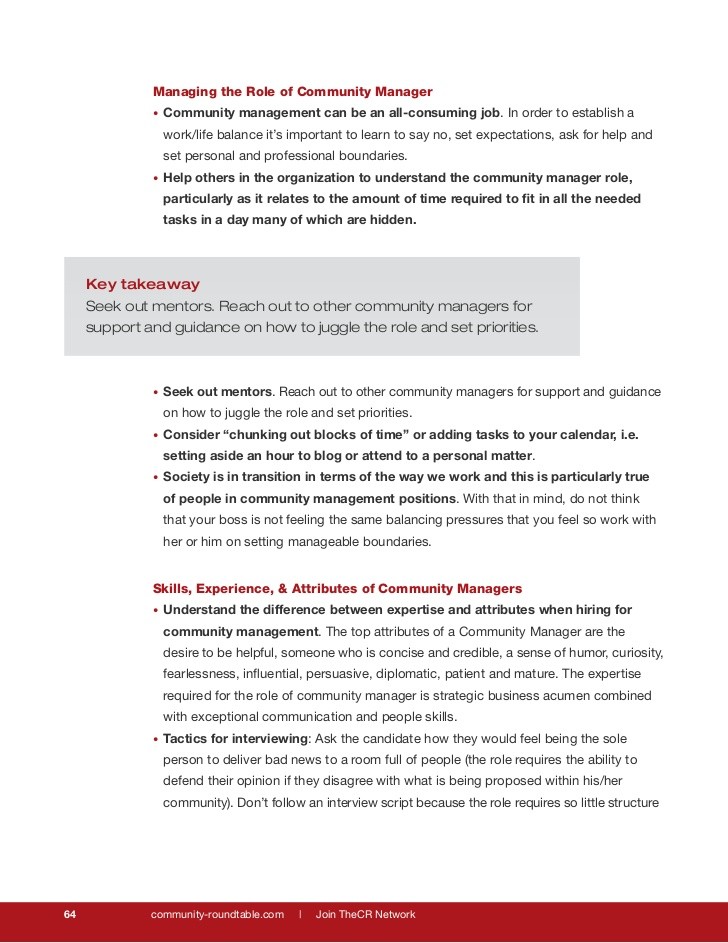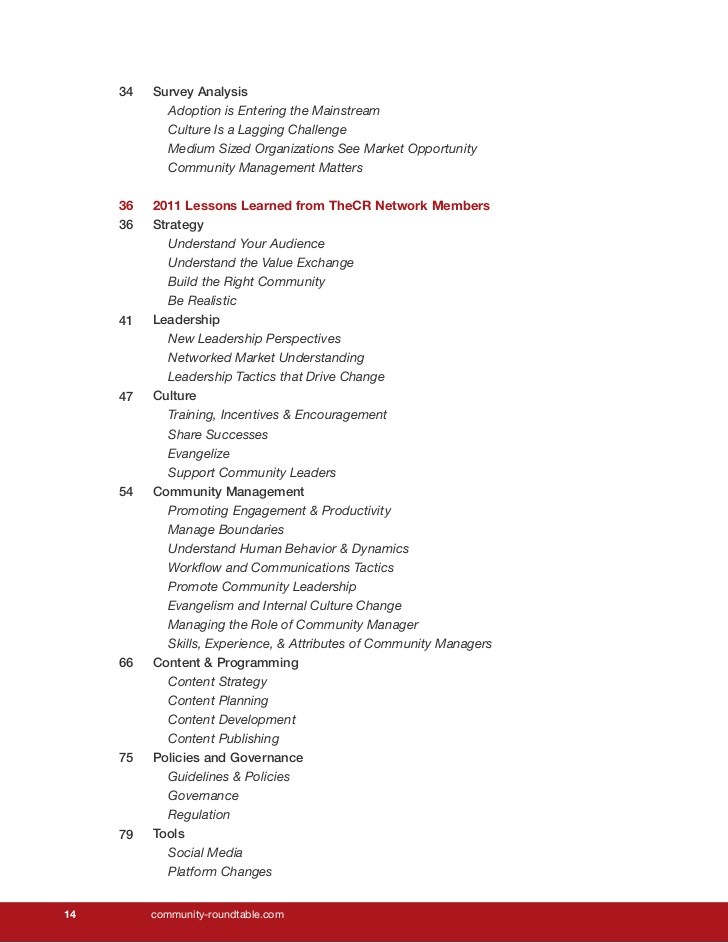Investing In Community 2013 State of Community Management The Community Roundtable
Post on: 16 Март, 2015 No Comment

Thanks to TheCR Network member and State of Community Management Advisory Board member Maria Ogneva for todays post.
Every year The Community Roundtable releases the State of Community Report. which aims to educate businesses about the business of community management, as well as to give community managers footing in their quests. By providing frameworks, models and research around community management, it allows community strategists to benchmark against peers and legitimize their financial plans in front of their businesses. I think this is really important work in a profession that’s at the height of everyone’s interest, but still lacks a common understanding. I believe in it so much that I joined this year’s advisory board .
As an advisory board member, I get various goodies, like sneak peeks at preliminary findings. As I dug into the data, I saw some signals that the practice of community management at businesses is starting to head into maturity. The data tells us that companies are starting to invest more in internal and external communities but are they setting themselves up for success?
When analyzing survey data, we are seeing some trends that say yes:
Dedicated Community Management
Many businesses are dedicating headcount to community management; most have at least one FTE – and sometimes teams – dedicated to community management. This (I hope at least) points to a realization that communities don’t run themselves, and an investment must be made in community management and change management, not just technology. Although I don’t have research to back this up (if you do, please post in the comments), through anecdotal evidence and conversations with community managers, I’ve observed that most communities – especially internal ones were started as IT initiatives, with little thought to what happens after launch. Investment in headcount points to the fact that businesses are either hiring from the beginning of launch, or realizing after launch that they will need a professional to step up and take the community to new heights.
In-House vs. Outsourcing
Also heartening is to see in the data that most community managers are in-house, not outsourced. Over the past few years, I’ve seen businesses retain agencies to manage their communities on a daily basis as a way to quickly meet demand. But as community building and development becomes more strategically important – and requires a unique skillset – it’s imperative to cultivate these skills internally. Investment in in-house talent is an encouraging trend and evidence that businesses are being more deliberate and strategic about community management.
Committing headcount is important, but it’s only the first step. From having worked in the field, I can tell you that even the most well-intentioned companies oftentimes have no idea what a community manager does and what skills are required. This means that hiring talent is a shot in the dark, and there isn’t opportunity for talent development. This brings me to the the trends that point to more could be done by companies to set themselves up for success:
Professional Training
Only half of our survey respondents provide resources for training for community managers. I found this interesting, and while the reasons are unknown, it’s fun to speculate. I think it’s mostly because companies don’t understand what skills and training are necessary, and what success looks like.

Oftentimes, people who step up to be community managers – or end up there because they launched the initiative – become “accidental community managers” without having the right skills or experience. Sometimes, community management is only part of their job – along with thousands of other things they have to do. I call these people “accidental community managers,” but it doesn’t mean that they don’t have the right mindset to be successful. A great opportunity in front of us is to help “accidental community managers” uplevel their skills, as long as they have the necessary success characteristics and passion for the job.
Other interesting points to explore as we go forward are:
- What the executive and cross-functional conversation looks like
- Trends in financial investment
- How community teams are structured
- What success looks like
- What community programs look like.
I’m excited to learn more in the release of The 2013 State of Community Management: The Value of Community Management report being released mid-June. What points of Community Management do you feel need further exploration?
-
Maria Ogneva is one of the many talented members of TheCR Network a peer network for community and social business professionals from over 90 companies. Members lead and participate in discussions focused on tactical and strategic solutions to issues that challenge them daily. Join today!














